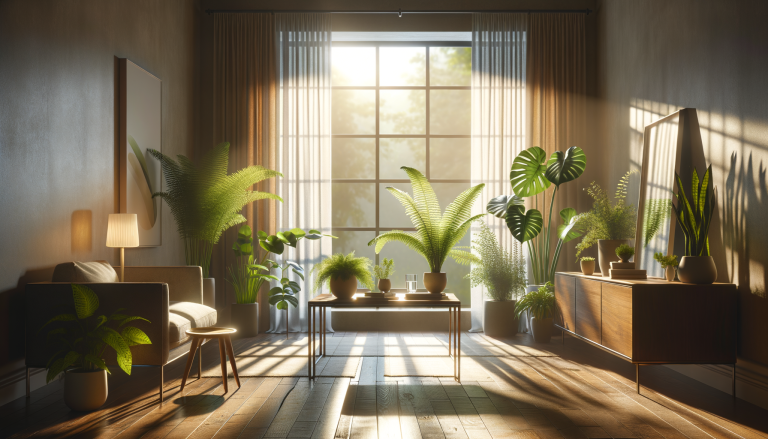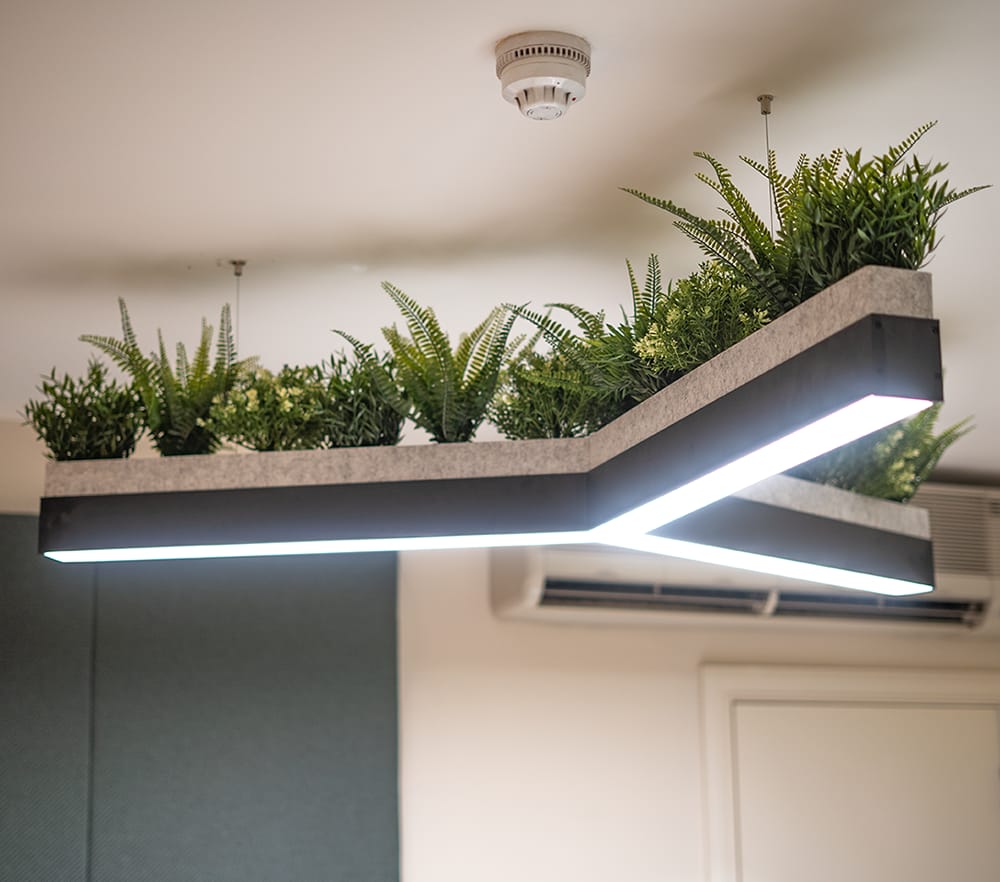We spend up to 90% of our lives inside as the world becomes more urbanised. This gives us shelter and warmth, but it also cuts us off from one of nature’s most important forces: sunshine. Not having natural light isn’t simply an aesthetic issue; it has a big, scientifically proven effect on our mental and physical wellbeing. The main assumption behind biophilic design is that people have a natural, biological need to be around nature. Using natural light in smart ways is not simply a design trend; it’s an important part of human health and happiness.
How sunlight and calmness work
Our bodies are really complicated machines, and the circadian rhythm, which is a 24-hour internal clock, is what keeps them in check. This rhythm controls our metabolism, hormone synthesis, and sleep-wake cycle. Light, especially the brilliant, blue-enriched light of the sun, is the strongest outside cue for this internal clock.
The suprachiasmatic nucleus (SCN) in our brains gets a signal that it is daytime when natural light comes into our eyes. This mechanism stops the body from making melatonin, which is the “sleep hormone,” so we stay awake and full of energy. On the other hand, when the sun goes down and the light levels drop, our bodies naturally start to make melatonin, which helps us get ready for a good night’s sleep. Too much artificial light, especially at night, can mess up this cycle and cause a lot of difficulties, such as sleeplessness, exhaustion, and a slowed circadian rhythm.
Natural light is an important part of our mental health, along with sleep. Sunlight helps our brains make serotonin, which is a neurotransmitter that is commonly called the “feel-good hormone.” Higher levels of serotonin are associated to a better mood, more focus, and a stronger sense of calm. On the other hand, low levels are often linked to Seasonal Affective Disorder (SAD) and clinical depression. This is why a sunny day may make us feel better right away and why a room that is always dark can be so tiring.
Researchers in a recent article published in Science Direct on the “Psychology of Light” talked about how light can be a “emotional driver” that can cause certain emotions and cognitive responses. The study found that the brightness, saturation, and modulation of light can affect how relaxed, private, and productive people feel.

Image source: constructive-voices.com
Ways to use architecture and design to get the most light
For a long time, architects and designers have known how powerful light can be. They have used it not only to light up spaces but also as a design element. This is called “daylighting,” and it means using windows, skylights, and other reflective surfaces in a smart way to let natural light into a structure.
- Proper building orientation: The first step in daylighting. In the Northern Hemisphere, south-facing windows get the most sunlight all day long. North-facing windows, on the other hand, let in softer, more even light that is great for art studios or workspaces. Architects also utilise clerestory windows, which are tall, vertical windows, to let in light without causing too much glare.
- Light shelves and light tubes: These are horizontal surfaces that designers use above windows to reflect and spread light. These shelves reflect sunlight off the ceiling and into the room, making the light more even without the sharp glare. You can use a light tube (or solar tube) in rooms that don’t have windows. This smart device is a reflective tube that brings light from the roof down into a room. It lights up even the darkest corners of a house with bright, natural light.
- Atriums and Open Spaces: Big atriums and open-plan layouts aren’t only for show; they are important biophilic solutions. Designers may make a focal centre that connects to nature and gives people a visible and tactile relationship to the outside by making big, open, light-filled rooms. The Reichstag building in Berlin is a great example of this. It has a huge, mirrored cone that reflects light down into the main chamber. This shows how daylighting can be both beautiful and very energy-efficient.
Image source: synergycreativ.com
Useful Advice for a Healthier, Brighter Home
You don’t have to build a new house to get the benefits of natural light. You can make your home healthier in numerous simple and efficient ways.
- Clean Your Windows: Cleaning your windows may seem like a no-brainer, but dirt and grime may block a lot of light from coming into your home. Regular, easy cleaning can make a big difference in how much light comes into your home.
- Place Mirrors in the Right Places: Mirrors are a great way for homeowners to get more light. Putting a big mirror on a wall that is perpendicular to or immediately across from a window can reflect and enhance the natural light, making the room feel bigger and brighter.
- Use Light Colours and Finishes: Walls, ceilings, and floors that are light in colour don’t soak up light; they reflect it. Choose light neutrals, whites, or soft pastels with a matte finish to reflect light around the space. Don’t use high-gloss finishes in gloomy spaces since they might make the sheen look uneven and unattractive.
- Trim Landscaping: Trim the bushes and trees outside your windows. They might be blocking a lot of light. Cutting them back might let more light into your home.
- Choose the Right Window Treatments: Don’t use thick, heavy drapes. Instead, choose light-colored, lightweight textiles or sheer blinds that let light in but also screen it. Bottom-up blinds might be a good choice if you want privacy. They let light in through the top while covering the bottom half of the window.
- Embrace Reflective Surfaces: Use furniture and decor with reflecting surfaces. You can use glass tables, metal frames, and even small, ornamental mirrored objects to spread light about the room.
Image source: constructive-voices.com
Examples and Ideas
Some of the world’s most creative building projects show how natural light can change things. For example, Louis Kahn’s Exeter Library has study carrels made of wood near to big windows, so each reader has their own source of natural light. The Church of the Light by Tadao Ando also uses a cross-shaped hole in a concrete wall to make a strong play of light and shadow, turning a plain room into a spiritual one. These examples indicate that light may be felt as well as seen.

We are not only making our homes more beautiful by consciously letting in the natural light; we are also making them healthier. This connection to nature is what the science of biophilic design is all about, and it’s a bond that may actually improve our well-being, one sunlit space at a time.
For more content like this CLICK HERE!
Reference
Biophilic Lighting Techniques That Boost Mood and Enhance Wellness
What is Biophilic Lighting? – Synergy Creative







